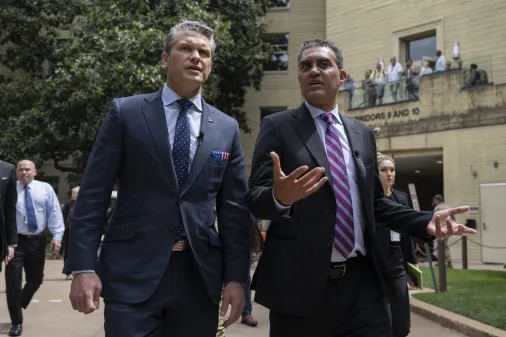An innovation cell within Army Human Resources Command is streamlining data and applying artificial intelligence and predictive analytics capabilities to grow and advance its workforce.
That command is responsible for the branch’s “largest repository of human data,” according to Lt. Col. Kristin Saling, the director of the innovation cell.
“We’re stepping into a number of projects right now where we’re looking at identifiers for key technical talent — trying to figure out what the markers are for people looking to be recruited into this workforce,” she said at a recent event hosted by AFCEA and moderated by DefenseScoop.
Effective analytics and AI rely on clean and accessible data. The Army has massive volumes of data increasing by the minute. Saling said the service over the past few years has been spending a lot of time cleaning up and making sense of the applicable data it captures.
That work will likely continue for a while going forward. But when data that is “quality enough to start building models on” is identified, she explained, “we [start] taking those and turning those into different use cases.”
One of those use cases that is currently being fielded throughout the Army is a retention prediction model.
Saling referred to the model as a “basically large neural net that takes into account all personnel data,” as well as socioeconomic data and employability statistics, to generate “a statistical prediction vector of the likelihood for attrition for every person on active duty.” The model is “highly accurate to about five years,” she added, noting that it is also enabling the Army to do targeted retention and incentive testing.
“We have a number of randomized trials we have going on right now,” Saling said. In them, officials are using AI to see how likely it is to “flip” service members who are “in the 95th percentile or above for wanting to leave the Army” — and ultimately have them sign on for further obligations.
“We’re having a lot of success with that,” she said. To her, this marks a crucial prediction capability the Army has never had before.
Referring to a separate AI use case, Saling said the Army is also leveraging its data and some nascent digital capabilities in a cooperative program with different research scientists and psychologists from universities around the nation to help identify members that are at risk for harming themselves or others — right when the behavior emerges.
“The model itself is extremely effective in predicting at-risk populations. The counterpart to that is a number of different tools and techniques that we’re building where we can actually tell people that if we have those groups identified, here’s what you need to do as a direction,” Saling said. “Once that gets fielded and piloted, we’re going to have something extremely powerful.”
These use cases are unfolding in the Army against the backdrop of a broader push from the Office of the Secretary of Defense to better organize and scale AI and data applications across the military through the newly established Chief Digital and AI Office (CDAO).
The CDAO will be vital to ensuring that Congress understands it must invest in AI capabilities for the Army and Defense Department in a “concerted and concentrated manner” going forward, Saling said.
She said she’s sent as many military leaders as she can to recent CDAO-run education pilot programs. Those officials are all returning back after the engagements “and asking better data-driven questions,” in the director’s view.
“The more we can get them doing that, the better. Let’s keep the pressure on both providing that education and emphasizing that it’s important,” Saling said.






